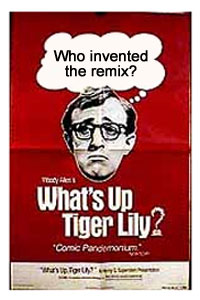This morning my inbox at work had an email from
AdAge, with a link to an article by Steve Rubel called
Too Much Infotechnology Can Lead To Overload. I wanted to see what Rubel had to say about it, because my opinion of this phenomenon goes against what most people in my industry seem to think. Like most of the articles about the imaginary "infotech overload" afflicting folks in their forties and fifties, is a fluff piece at best. Rubel's got it all wrong when he blames technology for the overload:
Over the last decade, Americans have become hopelessly addicted to information and busyness. We have all overheard people bragging about their back-to-back schedules and massive e-mail inboxes. We crave information and busyness because it makes us feel wanted, needed and, above all, important. However, too much of a good thing is never ideal.
So, being needy is a good thing?
I used to work with a guy whose blackberry was a constant source of self-esteem. He swore he was busy busy busy, but he never did much but fuss with that device. Take the blackberry away and he's still an asshole looking for anything to do but work (part of the reason he's no longer a co-worker). Rubel would blame the blackberry and email. The root of the problem lies elsewhere.
I bring this up whenever I read anything that claims "today's target audience leads a hurried and harried lifestyle". I have to call "bullshit" on it. We're actually less busy than we used to be, despite our best efforts to prove otherwise. We have DVRs and voicemail, Roomba's and automated bill-pay options. We can time-shift a lot of things for which we used to make appointments -- but most of us are still terrible at time management. That's why the
GTD folks are making so much bank right now.
But technology is not the problem. The people who insist every little alert is an excuse to drop everything are. It's called an
instant message, but you are not obligated to address it
this instant. When your phone rings, it only indicates that someone is trying to call you - not that you need to stop the world to take a call. If this kind of busyness makes you feel important, consider a career as a secretary or administrative assistant. But don't blame the technology for your own inability to cope and adapt.
And maybe try not to waste article inches on this stuff, especially considering the subject matter. Rubel's entire premise is that infotechnology leads to overload -- but all of his evidence supports the notion that human ego, however
enabled by information technology, is truly the source of the problem.
Would Rubel's article have the same effect if he were complaining that his iPod holds too many songs to listen to in one sitting, or that his DirecTV has too many channels? When you boil down the article, it's a bit of whining about feeling overwhelmed by all these emails one might otherwise use to validate one's own sense of self-importance. If having options is a symbol of status, the truly hip will be the ones who exercise the option to opt-out at least as often as they opt-in. But that's an idea considerably less ingratiating to the bulk of Rubel's marketing industry audience.
There is no information overload, but, as has been true throughout human history, there are a few too many egos getting in the way of common sense.




